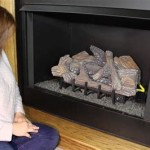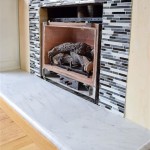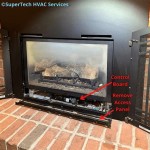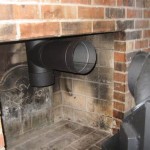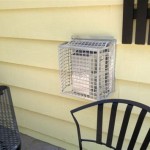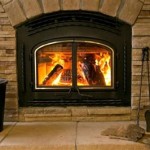How To Cover A Brick Fireplace
Brick fireplaces, while often possessing a certain rustic charm, can sometimes clash with a desired aesthetic update or modernization of a living space. Covering a brick fireplace is a viable option when a complete removal is not feasible or desired. This process, while requiring some degree of skill and planning, allows for a cosmetic transformation, effectively concealing the existing brick and creating a new focal point within the room. Several methods exist for covering a brick fireplace, each with its own set of advantages and disadvantages concerning cost, complexity, and aesthetic outcome. Careful consideration of these factors is essential before commencing any project.
Before initiating any covering project, a thorough inspection of the existing brick fireplace is crucial. Look for signs of damage such as cracks, loose bricks, or water stains. Addressing these issues prior to covering is imperative to prevent future problems and ensure the longevity of the overlying material. Any necessary repairs should be completed using materials compatible with brick construction. This may involve repointing mortar joints, replacing damaged bricks, or addressing any water leaks originating from the chimney or surrounding structure. Ignoring pre-existing damage can lead to further structural deterioration and potentially compromise the integrity of the covering material.
Framing and Drywalling the Fireplace
One popular and versatile method for covering a brick fireplace involves constructing a frame around the existing brick structure and then covering it with drywall. This technique provides a smooth, paintable surface that can be customized to match the surrounding décor. The initial step involves building a wooden frame using lumber, typically 2x4s. The frame should be securely attached to the surrounding wall studs and the floor, ensuring a stable and level surface. The dimensions of the frame will determine the final size and shape of the covered fireplace. It is essential to leave adequate space between the brick and the frame to allow for ventilation and prevent moisture buildup.
Once the frame is constructed, drywall panels can be attached using screws. The drywall should be carefully measured and cut to fit the frame, ensuring minimal gaps between panels. After the drywall is installed, the seams are taped and mudded to create a seamless surface. This process involves applying joint compound to the seams, embedding paper or mesh tape, and then sanding the dried compound smooth. Multiple coats of mud are typically necessary to achieve a perfectly even surface. The final step involves priming and painting the drywall to match the desired color scheme of the room.
This method offers flexibility in design. The frame can be constructed to create different shapes and sizes, allowing for the creation of a modern, minimalist look or a more traditional, ornate design. Additionally, the drywall surface can be further customized with textures, paint finishes, or decorative moldings. However, it is important to consider the added depth of the framed-out fireplace when planning the layout of the room. This method will reduce the floor space in front of the fireplace and may affect furniture placement.
Using Stone Veneer or Tile Over the Brick
Another option for covering a brick fireplace is to apply stone veneer or tile directly to the existing brick surface. This technique provides a more durable and aesthetically pleasing finish compared to simply painting the brick. Stone veneer and tile are available in a wide variety of colors, textures, and styles, allowing for a customized look that complements any décor. Before applying the veneer or tile, the brick surface must be properly prepared. This involves cleaning the brick thoroughly to remove any dirt, dust, or loose mortar. A bonding agent may also be applied to improve adhesion.
The stone veneer or tile is then applied using a thin-set mortar. It's crucial to choose mortar specifically designed for use with the chosen veneer or tile material. The mortar is applied to the back of each piece and then pressed firmly onto the brick surface, ensuring proper alignment and spacing. Spacers may be used to maintain consistent grout lines. After the mortar has dried, the grout lines are filled with grout and then cleaned to remove any excess grout. The type of grout used should be appropriate for the environment, ensuring resistance to heat and moisture if required.
This method is more labor-intensive than simply painting the brick, but it offers a more durable and visually appealing result. Stone veneer and tile are resistant to heat, scratches, and stains, making them ideal for use around a fireplace. They also add texture and dimension to the surface, creating a more interesting and unique focal point. However, this option can be more expensive than other methods, as the cost of stone veneer or tile and the necessary materials can be significant. Additionally, proper installation requires some experience and skill to achieve a professional-looking result.
Applying a Concrete Overlay
Applying a concrete overlay is a more contemporary approach to covering a brick fireplace. This technique involves applying a thin layer of concrete over the existing brick, creating a smooth, modern surface. Concrete overlays can be tinted or stained to achieve a variety of colors and finishes, allowing for a customized look that complements any décor. Before applying the concrete overlay, the brick surface must be properly prepared. This involves cleaning the brick thoroughly and applying a bonding agent to improve adhesion. A wire mesh may also be embedded in the concrete overlay for added strength and durability.
The concrete overlay is then applied using a trowel or sprayer. Multiple coats may be necessary to achieve the desired thickness and consistency. After the concrete has dried, it can be sanded and polished to create a smooth, even surface. The overlay can then be sealed to protect it from stains and moisture. Concrete overlays offer a seamless and modern look that is both durable and easy to maintain.
This method allows for a high degree of customization. The concrete can be textured, stained, or polished to create a variety of different looks. It can also be used to create unique architectural features, such as curved surfaces or integrated shelves. However, applying a concrete overlay requires specialized skills and knowledge. Proper mixing, application, and curing of the concrete are essential for achieving a durable and aesthetically pleasing result. It's often advisable to hire a professional contractor with experience in concrete overlays to ensure a successful installation.

How To Cover A Brick Fireplace With Wood Stone Nina Hendrick Home Remodel Diy

How To Cover A Brick Fireplace With Wood Stone Nina Hendrick Home

Brick Fireplace Makeover Pine And Prospect Home

How To Cover A Brick Fireplace With Wood Stone Nina Hendrick Home

16 Red Brick Fireplace Makeover Ideas

How To Cover A Brick Fireplace With Wood Stone Nina Hendrick Home
:max_bytes(150000):strip_icc()/MadetobeaMommaBefore-5bb2476446e0fb002607ad4f.jpg?strip=all)
Before And After Fireplace Makeovers

Fireplace Remodel Diy A Facade To Cover An Old Brick Without Painting The Build

Diy Fireplace Makeover Wood Slat

16 Red Brick Fireplace Makeover Ideas
Related Posts

